Step-by-step tutorial
Step 1
Gather your materials.

Step 2
Pour the ½ cup of water into a Ziploc® brand sandwich bag (avoid filling the bag beyond half its size). Add two to three drops of food coloring and mix together.
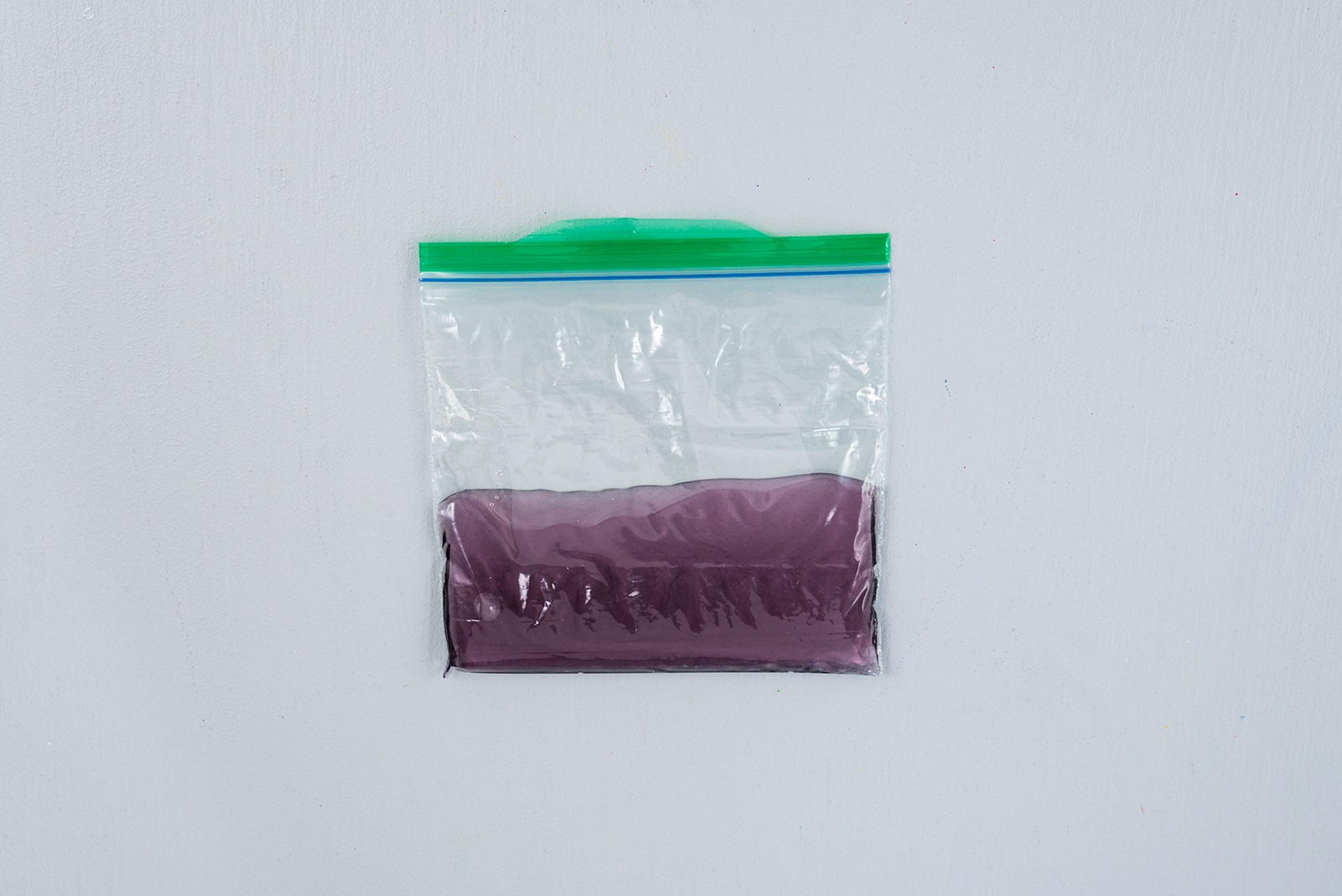
Step 3
Pour 1½ cups of oil into the bag (avoid filling the bag beyond half its size) and firmly seal the bag. Observe what happens to the oil and the water. Which substance floats to the top?
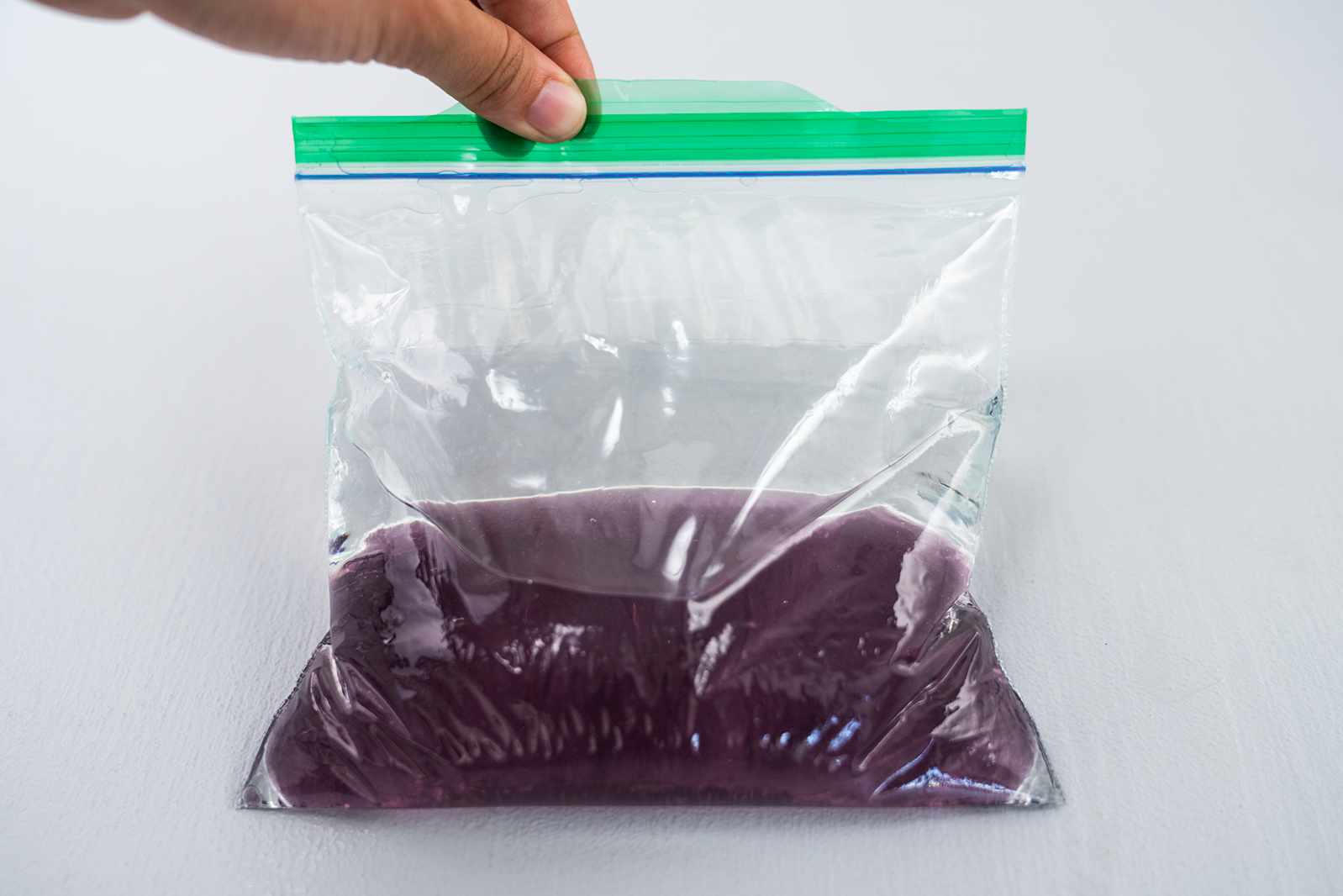
Step 4
Break one antacid tablet into pieces (only use one tablet at a time). Drop the pieces into the bag. As the antacid dissolves, the sodium bicarbonate and citric acid react together, creating carbon dioxide gas bubbles. You made a bubble lamp! As the bubbles rise, they give a temporary lift to the water. As the bubbles burst at the surface, the water falls back down.
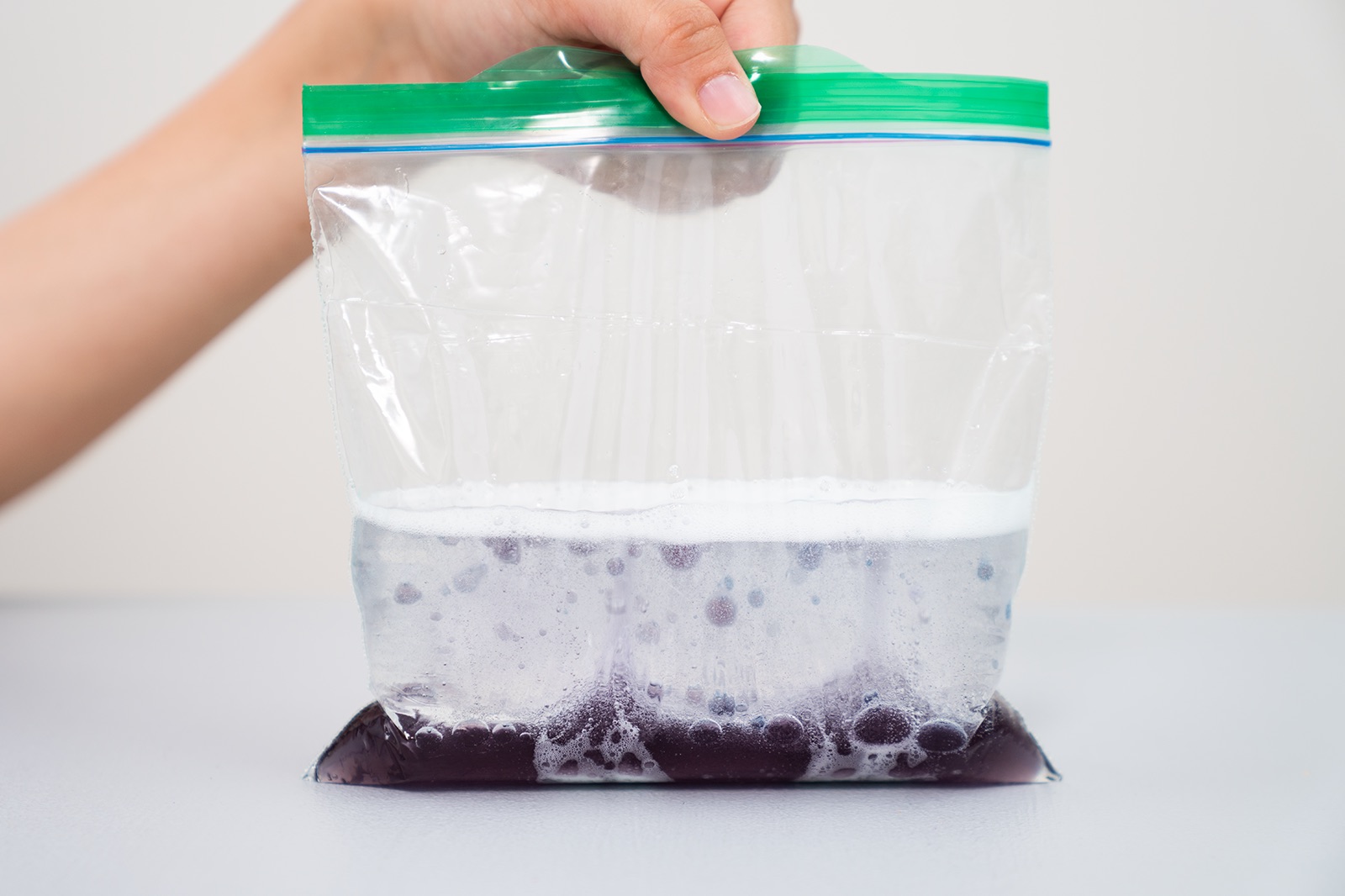
Step 5
To create a glowing bubble lamp, make fluorescent water with a highlighter. Use the highlighter (yellow or green work best) to color a paper towel sheet until it’s completely covered.

Step 6
Soak the colored sheet in a ½ cup of water for 15 seconds, until all the color has been absorbed by the water and the towel is almost inkless.
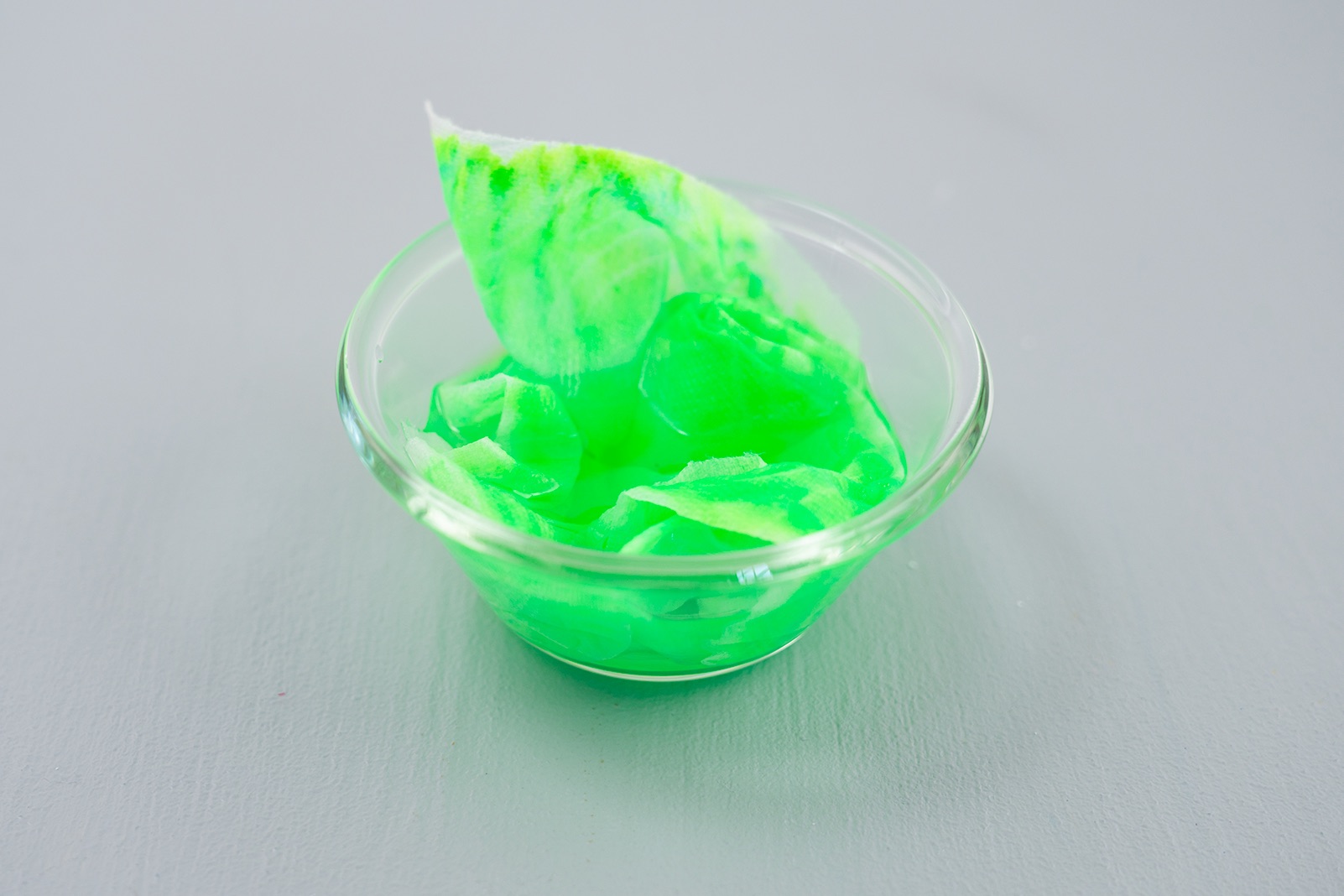
Step 7
Remove and wring out the paper towel to get as much of the ink into the water as you can.

Step 8
Now repeat Steps 2-4 with the highlighter water in place of the food coloring water. For a glowing effect, add the antacid tablet pieces to the bubble lamp in a dark room. Point the black light at the bag and watch the glowing bubble lamp in action!
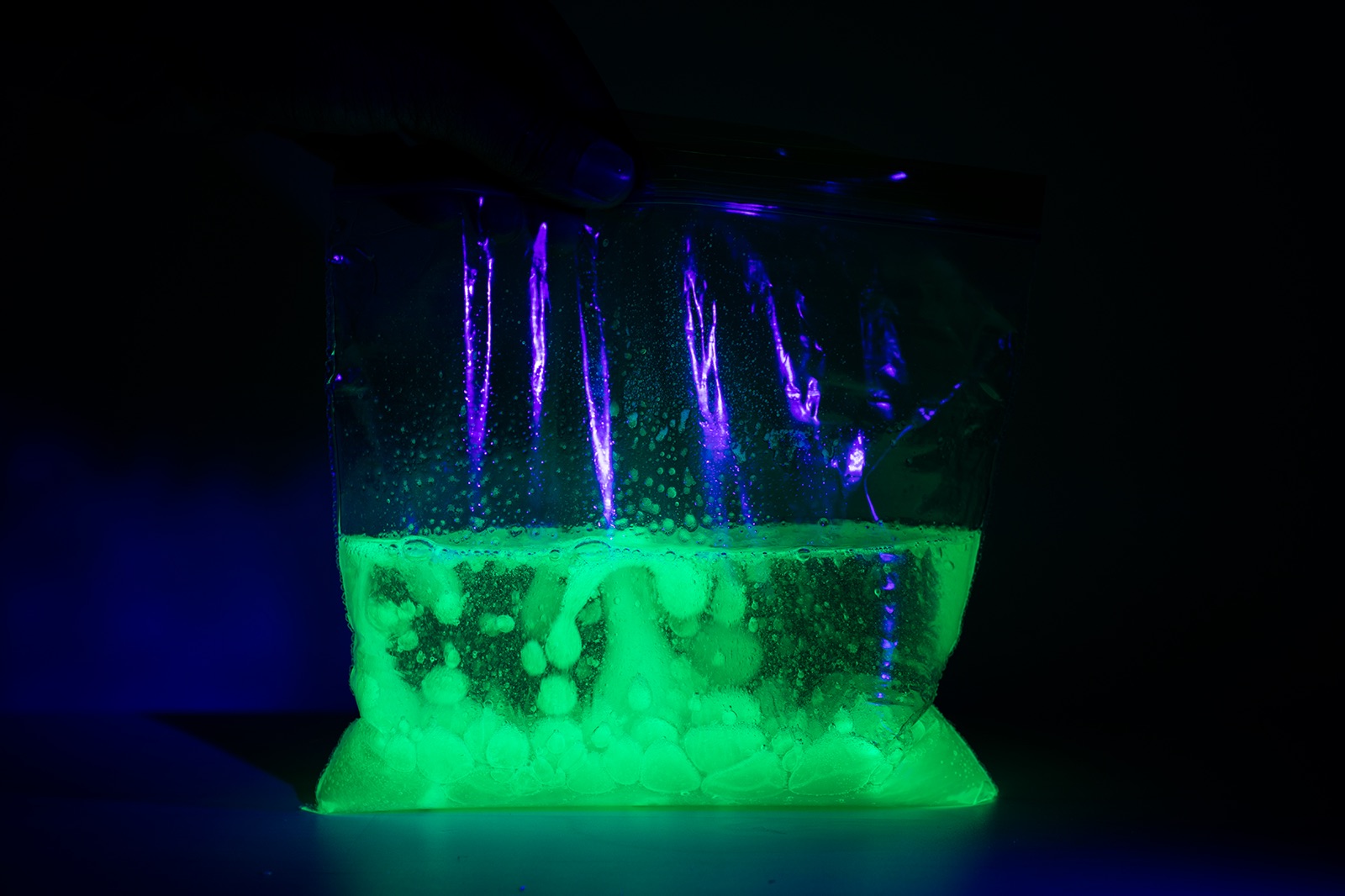
Learn more
Have you ever noticed how water beads up on most surfaces? (Try dripping water on a penny, and you’ll see what we mean.) That’s because water molecules are attracted to each other, so they tend to stick together and form little droplets. Oil molecules, on the other hand, are not attracted to water molecules. In fact, oil molecules and water molecules push each other away. That’s why oil and water don’t mix, and why oil is called a hydrophobic (or water-fearing) material. The oil floats to the top because it’s less dense than water. (Try weighing a cup of oil and a cup of water —you’ll find that the oil weighs less.) Simple enough... until we add the antacid tablet. Antacid tablets contain sodium bicarbonate (also known as baking soda) and citric acid, plus some other substances. In their solid form, the sodium bicarbonate and acid can’t react. But as the tablet dissolves in the water, a chemical reaction occurs between the two, creating carbon dioxide gas bubbles. Can you guess if the gas bubbles are more or less dense than the water and oil? They’re less dense! That’s why the bubbles quickly rise to the top, giving a temporary lift to droplets of water that hitch a ride. As the bubbles burst at the surface, the water sinks back down to the bottom. That’s how you get the rising and falling globes of colored water that make your Bubble Lamp so mesmerizing!
